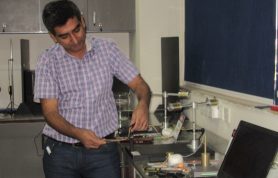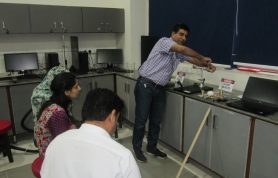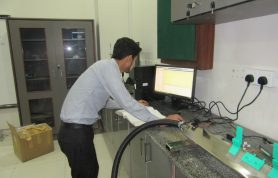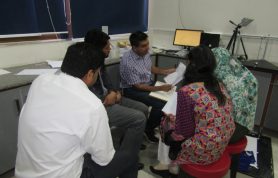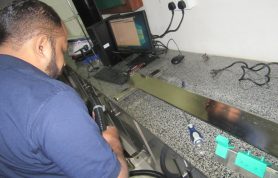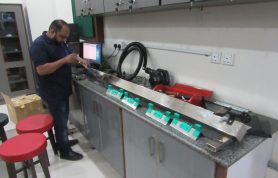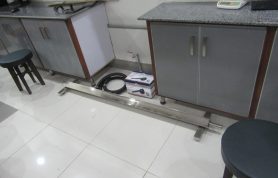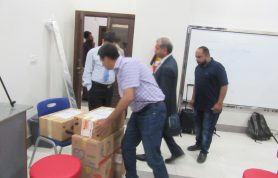- Craters in sand
- Newton’s cradle observed by video tracking
- Oscillations observed through webcam
- Rotational mechanics and angular momentum
- Collisions on an air track and conservation of momentum
- Dynamics of water discharge through a cylinder
- Energy conservation in two dimensions
The Physlab team successfully crafted all of these setups within an intensively active period of three months. The time coincided with the indolent summer and first week of the meditative Ramadan period. The equipment included homegrown data loggers (Physlogger), handcrafted apparatuses for rotational mechanics, home built mass balances (Physload), a linear air track with 3D printed gliders and home made photo-gates for the study of conservation of momentum, webcams and software codes for video tracking simple harmonic motion, studying the mechanisms of crater formations and observing the transfer of energy and momentum in the famous Newton’s cradle. All of the locally developed hardware has been crafted with the support of Qosain scientific under HEC’s Technology Development Fund program.
The equipment was delivered to the esteemed institute by the Physlab team led by Dr. Sabieh Anwar (Associate Professor and PI) accompanied by Muhammad Umar Hassan (Senior Development Engineer) and Azeem Iqbal (Lab Instructor), Khadim Mehmood (Junior lab technician) and Sheraz Ahmad (Developer at Qosain Scientific).
The entire project team consisted of:
PI from LUMS: Dr. Sabieh Anwar
PI from NUTECH: Dr. Arbab Ali Khan
The team from LUMS: Khadim Mehmood, Umar Hassan, Hafiz Rizwan, Ali Hassan, and Azeem Iqbal
The team from Qosain Scientific: Muhammad Shafique, Shiraz Ahmad
Following are galleries of the experimental journey from LUMS to NUTECH.
Final visit to NUTECH for installation and commissioning of the equipment
Equipment manufacturing and testing

















